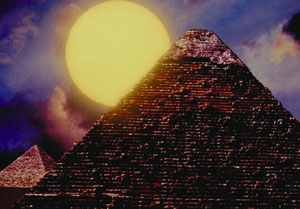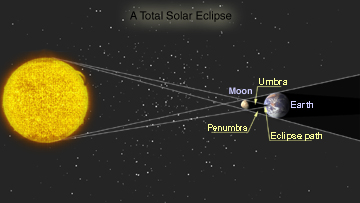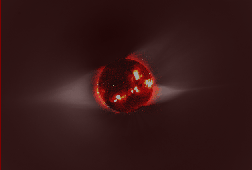Click on image for full size
Courtesy of Corel Corporation
Related links:
Total Solar Eclipse - Coming Soon!
News story originally written on February 23, 1998
There is a solar eclipse coming to a theater near you! Well, Shakespeare said all the world's a stage, didn't he? There really will be a total solar eclipse on February 26th. The complete eclipse will be visible mainly in the Carribean, though much of South America and the southern and eastern United States will able to see a partial eclipse.NASA will investigate this solar eclipse in several ways. First, NASA will use ground-based telescopes to analyze the structure and magnetic activity of the Sun's corona. NASA will observe the eclipse from Guadeloupe and from Aruba.
Now, I know that Aruba sounds inviting this time of year (especially to those of you in the northern U.S.), but there are actually more exciting vantage points from which to observe the Sun! First, the NASA/ESA SOHO (Solar and Heliospheric Observatory) spacecraft will assist in verifying earth-bound observations of the Sun during the eclipse.
Probably the most exciting vantage point to see the Sun is from the NASA/ESA Ulysses spacecraft. The Ulysses spacecraft is in polar orbit around the Sun right now which gives this spacecraft a "birds-eye view" of the Sun's corona. Ulysses is likely to see huge loops of solar material tearing away from the Sun's corona. These loops are seen from the Earth only during solar eclipses, but they are extremely important because they can cause an increase of space weather storms!
One way to view this solar eclipse is to watch the coverage on NASA TV ( available through the GE-2 satellite, transponder 9C located at 85 degrees West longitude, vertical polarization, with a frequency of 3880 MHz, and audio at 6.8 MHz). If you are outside during the eclipse (from about 16:00-18:00 UT), remember, never look directly at the Sun! Here are some solar eclipse viewing tips...















